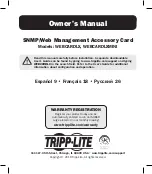
10-6
Cisco MGX 8850 (PXM1E/PXM45), Cisco MGX 8950, Cisco MGX 8830, and Cisco MGX 8880 Configuration Guide
Release 5.0.10, OL-3845-01 Rev. B0, August 16, 2004
Chapter 10 Switch Maintenance Procedures
Replacing Cards
Replacing Cards
The procedures in this section describe how to replace cards with another card of the same type. The
following sections describe how to do the following:
•
Replace PXM cards
•
Replace PXM45/A or PXM45/B cards with PXM45/C cards
•
Replace AXSM cards with AXSM/B cards
•
Replace service modules (AUSM, AXSM, CESM, FRSM, and VISM)
•
Replace SRM cards with SRME/B
•
Replace RPM cards
Caution
When replacing T1 or T3 cards are replaced with E1 or E3 cards, or vice versa, you must enter the
clrsmcnf command for the appropriate slot before you install the replacement card. For details about
using clrsmcnf command, refer to the
“Clearing a Slot Configuration”
section in
Replacing PXM Cards
PXM front and back cards can be replaced when the switch is operating. If a PXM is operating in
standalone mode, all calls are interrupted until the PXM is replaced and operating correctly. If the switch
is using redundant PXM cards, you can replace the standby card without interrupting calls. To determine
if the card you want to replace is active, enter the dspcd slot command. If the card you want to replace
is the active card, enter the switchcc command to place the card in standby mode.
Because PXM card sets store configuration information that controls switch operation, a nativity check
is performed each time a PXM front card or hard disk card is added or replaced. If a PXM has been
configured in a Cisco MGX switch, the backplane serial number is stored on the PXM front card and on
the PXM hard disk (the hard disk is on the PXM1E front card or on a PXM45 back card). If a PXM card
is inserted into a chassis or the card is reset with a command such as resetsys, the nativity check is run
to determine if the PXM cards are native to the chassis. If the chassis serial numbers configured on all
PXM cards match the switch chassis serial number, the cards are all native and no special action is
required.
The purpose of the nativity check is to resolve configuration differences between PXM cards. Some
configuration is stored on the PXM front card and hard disk. This information includes the runtime
software version to be used. The actual runtime software is stored on the PXM hard disk.
Note
When you replace a PXM card, the replacement card uses the boot software stored on the replacement
card and the runtime software configured for slots 7 and 8 in Cisco MGX 8850, MGX 8880, and MGX
8950 switches, or slots 1 and 2 in the Cisco MGX 8830. If the boot software stored on the replacement
card is not the correct version, you should upgrade it while the card is operating in standby mode. For
instructions on upgrading boot software, see to
















































